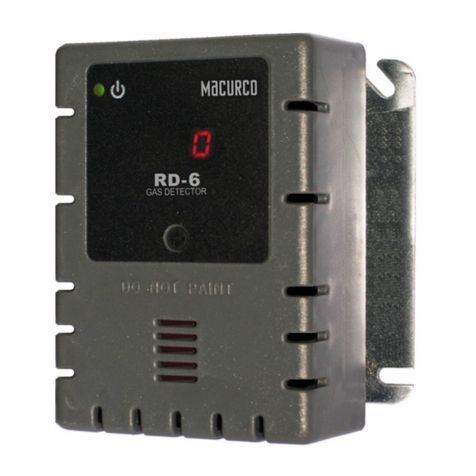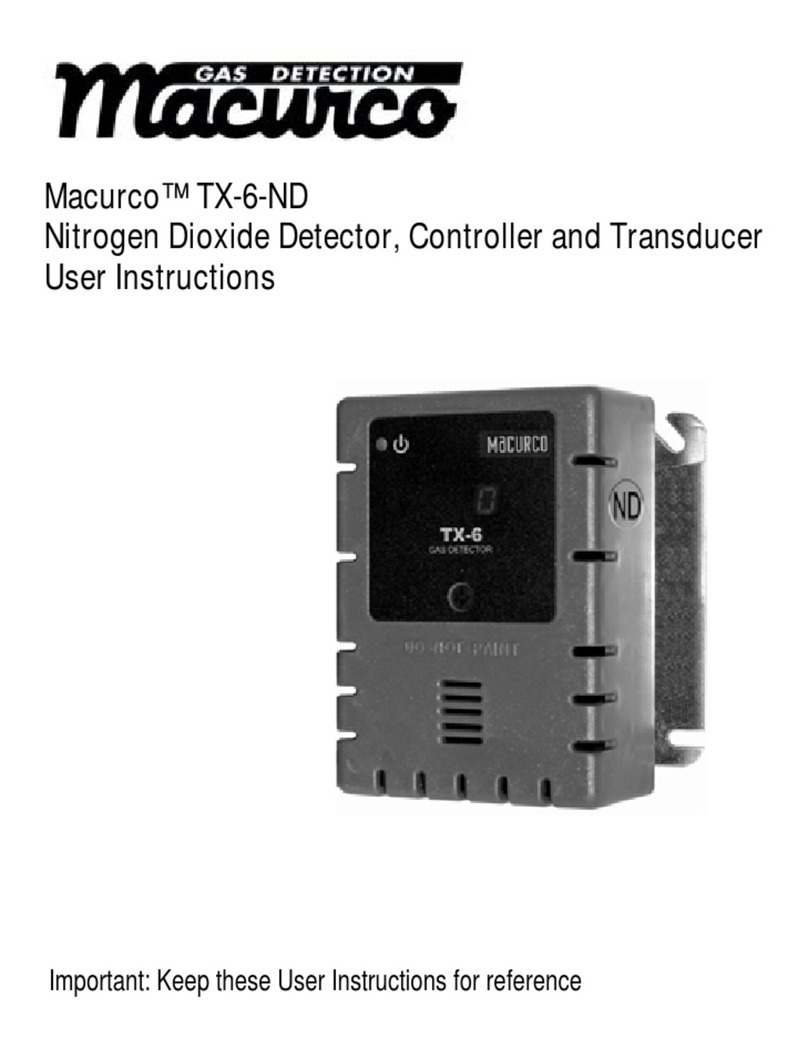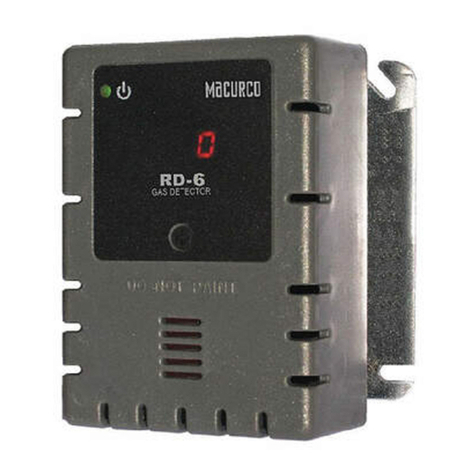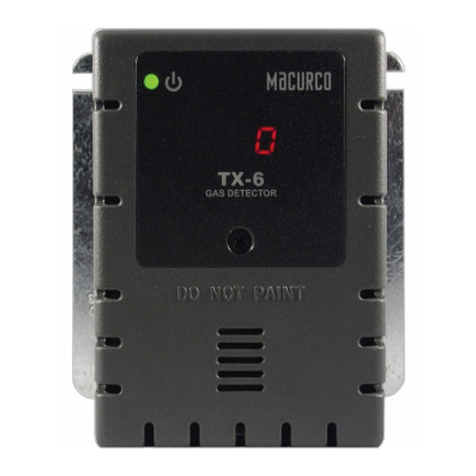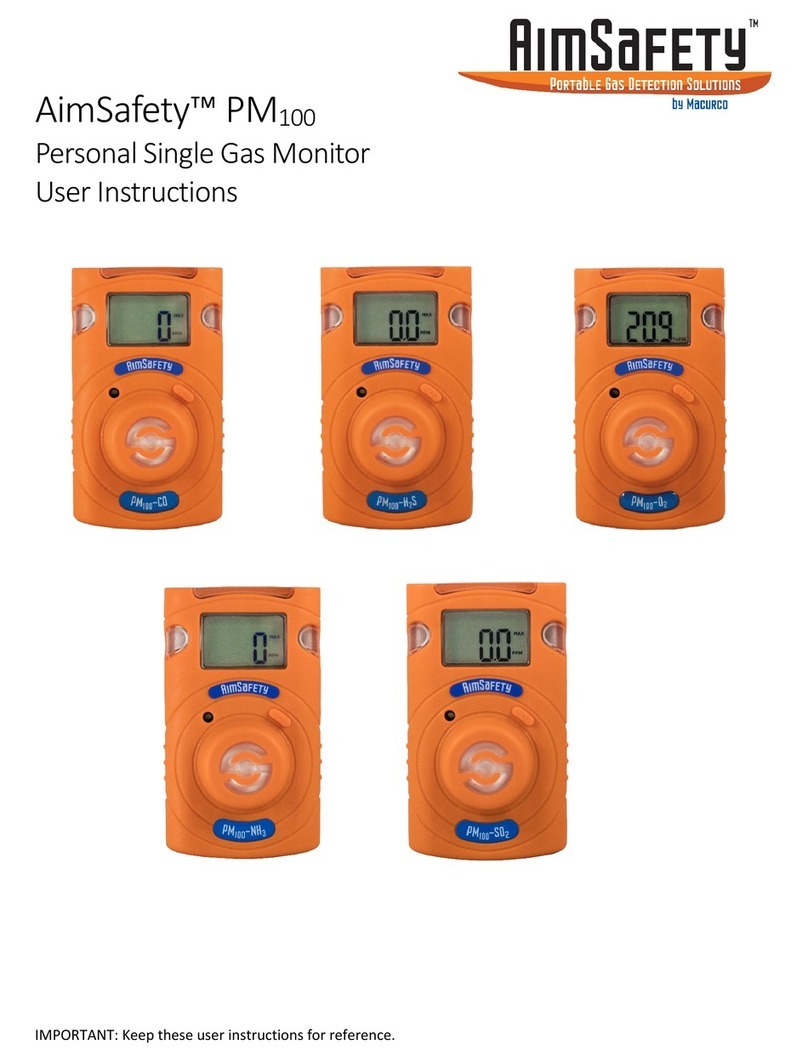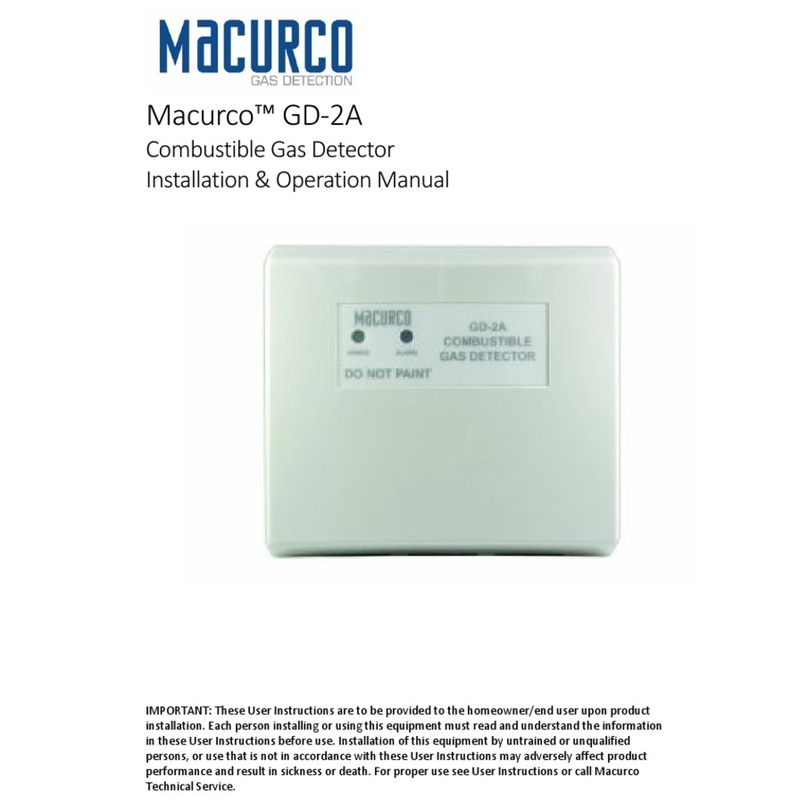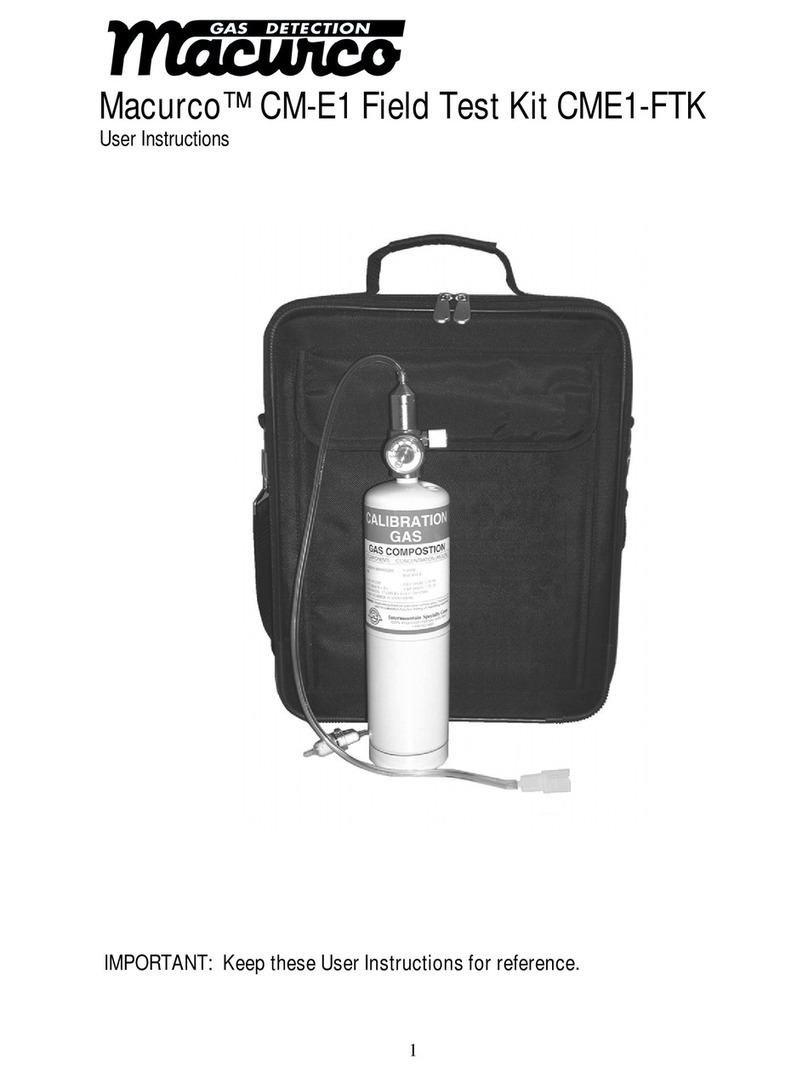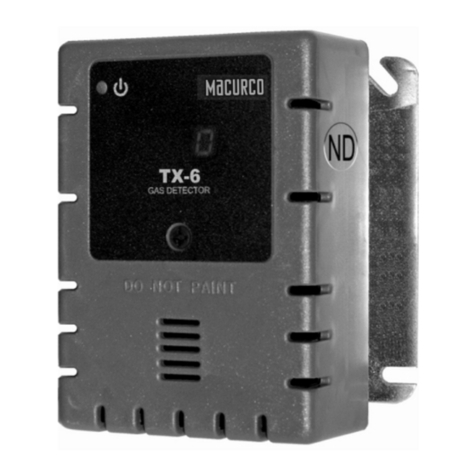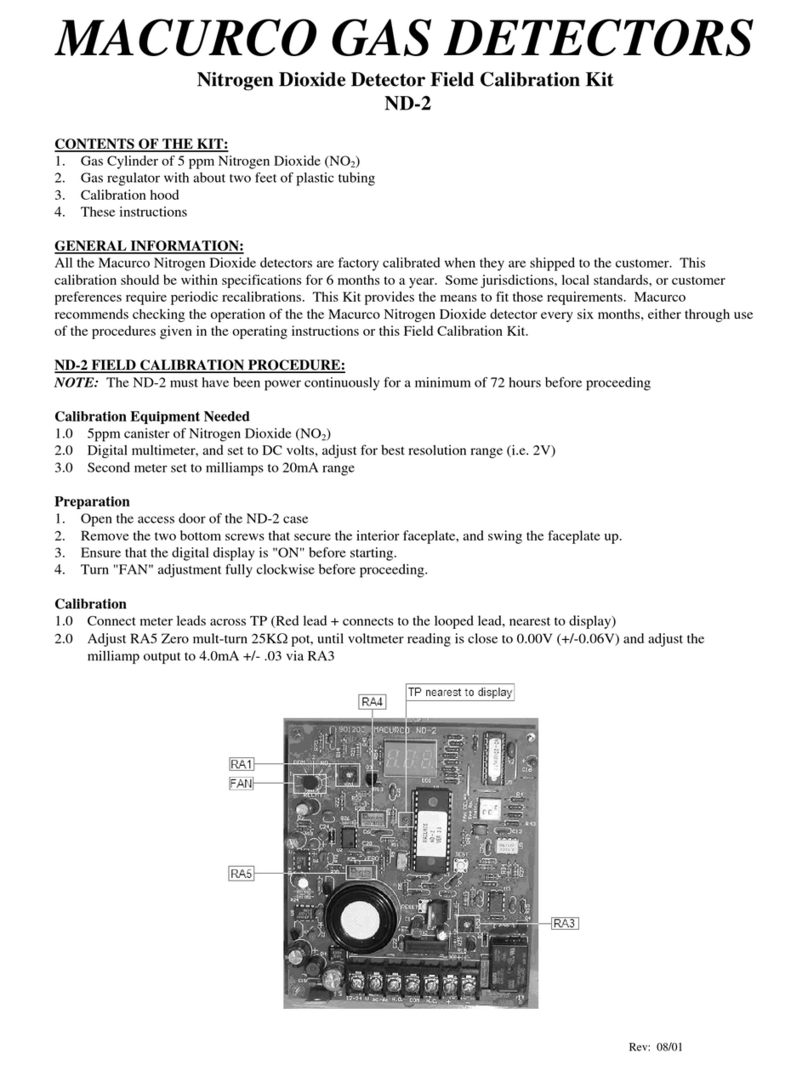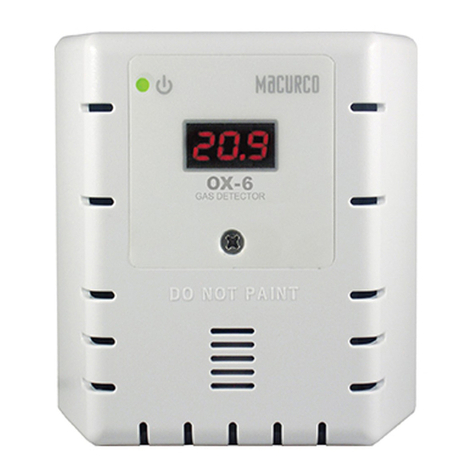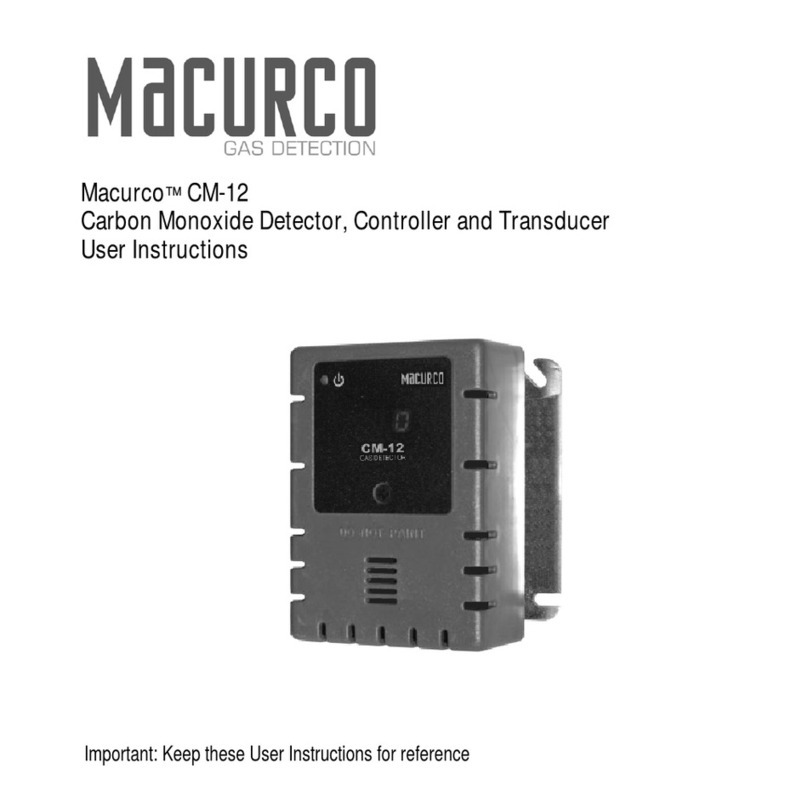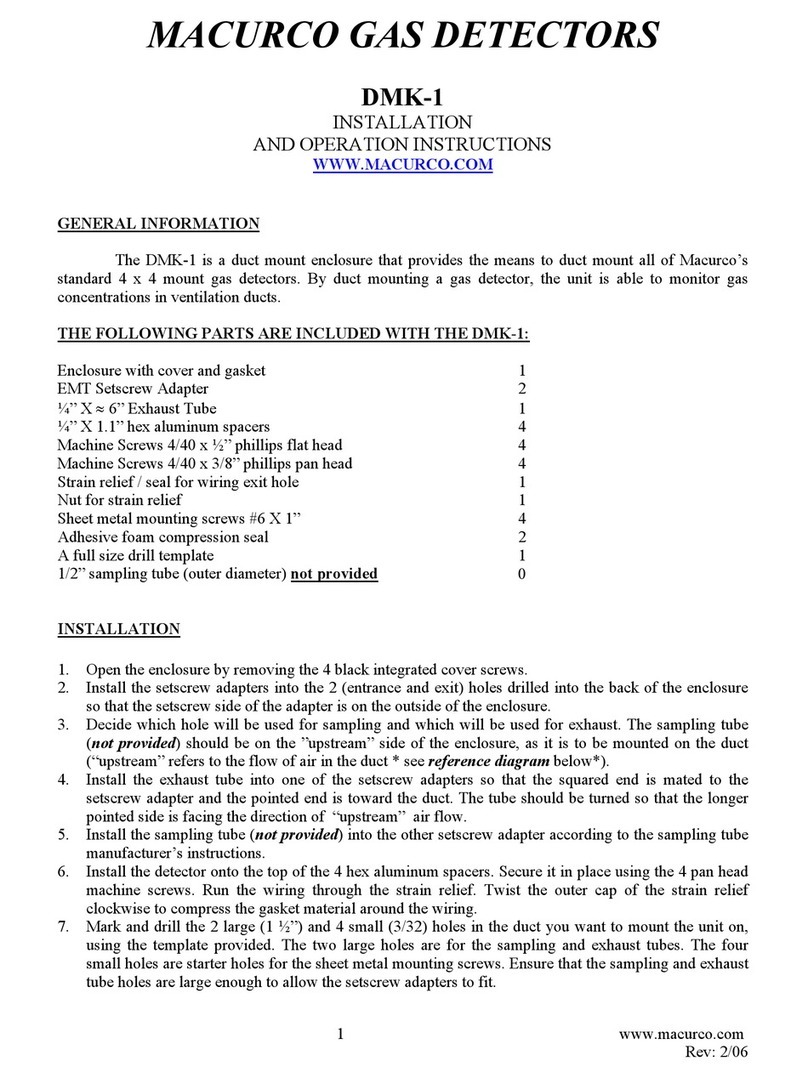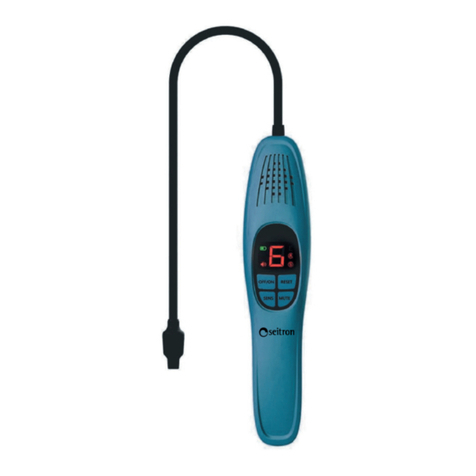
5
Features
ETL Listed to UL 61010-1
Low level meter capable of displaying from 0-100 ppm Ammonia
The TX-6-AM meets NIOSH and OSHA standardsfor gas exposure
Selectable fan and alarm relay activation
5 A SPDT fan relay controls starters of exhaust fans
0.5 A N.O. or N.C. alarm relay connectsto warning devices or control panels
4-20 mA Current Loop
TX-6-AM mounts ona standard 4x4 electrical box and becomes cover forthe box
Supervised system: any internal detector problem will cause the fan & alarm relay to activate
Calibration kit is available. One screw allows access for calibration or gas test
Specifications
Power: 3 W (max) from 12 to 24 VAC or 12 to 32 VDC
Current @ 24 VDC:75 mA in alarm (two relays), 50 mA (fan relay only) and23 mA stand by
Shipping Weight:1 pound (0.45kg)
Size: 4 1/2 x 4 x 21/8 in. (11.4 X 10.2 X 5.4 cm)
Color: Dark gray
Connections: plugs/terminals
Mounting box: (not included) 4x4 electric
Fan relay: 5 A, 240VAC, pilot duty, SPDT, latching or non-latching
Fan relay actuation: selectable at diS (disable), 15, 20, 25 (default), 30, 35, 40, 45, 50, 55, 60, 65, 70, or 75 ppm NH3
Fan Delay Settings of 0, 1, 3 (default), 5 and 10 minutes
Fan Minimum Run Time settings are 0 (default), 3, 5,10 or 15 minutes
Fan relay latching ornot latching (default) selectable
Alarm relay: 0.5A 120 V, 60 VA
Alarm relay actuation: selectable N.O. (default) or N.C.
Alarm relay settings: diS, 20, 25, 30, 35, 40, 45, 50, 55, 60, 65, 70, 75 (default), 80, 85, 90, 95 or 100 ppm NH3
Current Loop: 4-20 mA for 0-100ppm NH3, selectable to off or on (default)
Buzzer: 85 dBA at 10cm settable to off (default) or on
Digital display: 3 digit LED selectable to off (default) or on.
Operating environ:0°F to 125°F (-18C to 52C).10 to 90% RH
INSTALLATION AND OPERATING INSTRUCTIONS
The following instructions are intended to serve as a guideline for the use of the Macurco TX-6-AM Ammonia Detector. It is not to be
considered all-inclusive, nor is it intended to replace the policy and procedures for each facility. If you have any doubts about the
applicability of the equipment to your situation, consultan industrial hygienist or call Technical Service at 1-877-367-7891.
